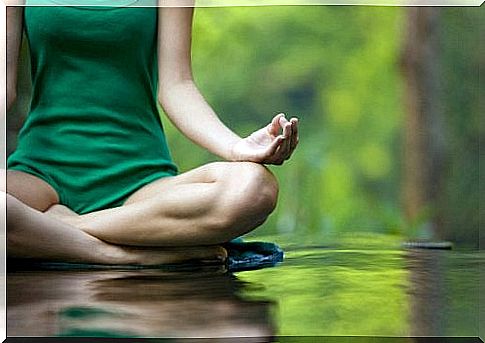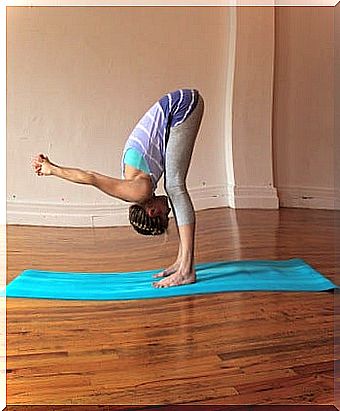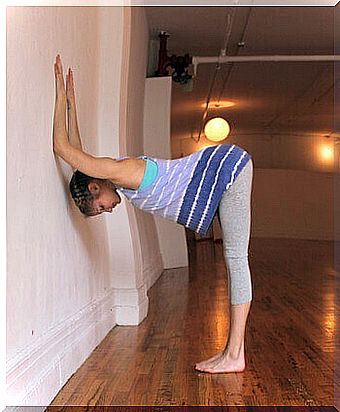4 Yoga Postures To Ease Back Pain

Back pain has become one of the most common annoyances for most people, as the use of technological devices and stress are potential causes of its continued development. See 4 yoga postures to lessen back pain.
The most normal is for the pain to go away with a little rest and the consumption of some painkiller; however, on some occasions, it may remain longer than usual, requiring another type of treatment.
Although at first glance it doesn’t seem appropriate, practicing some yoga postures can serve as therapy to improve this symptom.
Through yoga we can stimulate circulation and relieve muscle tension that prevents pain from being quickly relieved.
On this occasion we want to reveal the 4 best postures so that you don’t forget to practice them at home or in some free space in the place where you work. Try it!
1. Forward flexing wrists to ease back pain

This movement provides the necessary stretch for the tense muscles of the spine and stimulates the nervous system.
How to make?
- Stand upright on a yoga mat and spread your feet hip-width apart.
- Bend your knees and bend so that your back touches your legs, until your abdomen touches your thighs.
- Bring your hands together behind your back.
- Relax your back, neck, and head, and squeeze your wrists.
- Do between 10 and 20 repetitions, inhaling and exhaling.
2. Table against wall to reduce back pain

This move is a little more complex and it takes a lot of practice to do it correctly.
It is ideal for pain in the lower back, as well as for relieving tension in the upper body.
How to make?
- Stop in front of a wall with your arms outstretched and lean your body forward, placing your palms on the wall with your fingers well stretched.
- Reinforce the position of your fingers on the wall and pull your navel back as you stretch your tailbone toward the floor.
- Lift the ribs from the pelvis so that you get a natural curve in the lower back and an active abdomen.
- Keep your spine long and start walking with your legs back, bending your waist and forming an L.
- Repeat this exercise with 10 or 20 breaths and return to starting position.
3. Dog looking down (Adho mukha shvanasana) to ease back pain
The belly-down dog or “Adho Mukha Svanasana” is an ideal warm-up posture as it involves stretching the entire body.
It tones the spinal nerves and promotes blood circulation from the lower body to the head.
It also works to strengthen the muscles and joints of the arms, legs, neck and back.
How to make?
- Place yourself in a dog position, with your feet hip-width apart and your palms as a fulcrum.
- Then support the metatarsals and stand up like a dog.
- It’s important not to pant your back too much backwards because it can tighten your muscles the wrong way.
- Raise your ribs so that your shoulders and spine are firm.
- Push your tailbone to your heels and press again through the inside and outside of your feet.
4. Child’s position to reduce back pain
The “ balasana ” or child position is a relaxed movement that generates an active stretch for the spine.
It’s for resting between exercises or finishing a stretching routine. It is recommended to relieve tension associated with stress.
How to make?
- Get into a four-point position to do the child’s pose for one or several minutes.
- Try the pose with your knees apart, thumbs in contact, then bring your knees together for a spinal cord stretch.
- If your head doesn’t touch the floor, place a yoga block under your front so you can relax completely.
- The arms can also rest against the body.
- Breathe in deeply and each time you exhale you will feel the tension melting away.
As you can see, it’s very easy to do some yoga postures to increase our sense of well-being.
If you combine them with breathing exercises or meditation, you can have many benefits for the balance of your body and mind.









